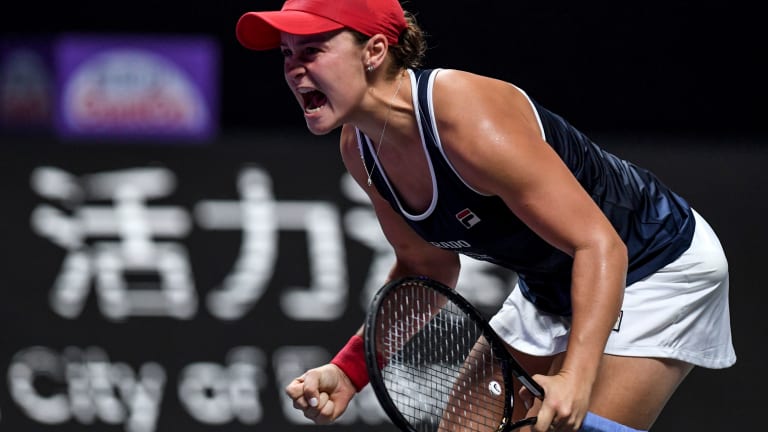WTA Finals
WTA Finals confirms what was suspected: Ash Barty was the best of 2019
By Nov 03, 2019WTA Finals
How Coco Gauff pulled off a miracle marathon win over Zheng Qinwen in Riyadh
By Nov 09, 2024WTA Finals
Coco Gauff rallies against Zheng Qinwen for first WTA Finals title in Riyadh
By Nov 09, 2024WTA Finals
WTA Finals Preview: Coco Gauff, Zheng Qinwen face off for first year-end crown in Riyadh
By Nov 09, 2024WTA Finals
Coco Gauff solves Aryna Sabalenka for first final at WTA Finals, will face Zheng Qinwen for Riyadh title
By Nov 08, 2024WTA Finals
Zheng Qinwen holds off Barbora Krejcikova to reach WTA Finals final
By Nov 08, 2024WTA Finals
WTA Finals Preview: Aryna Sabalenka vs. Coco Gauff leads semifinal slate
By Nov 07, 2024WTA Finals
Defending champion Iga Swiatek eliminated from WTA Finals despite 2-1 record, win in last match
By Nov 07, 2024WTA Finals
Barbora Krejcikova surges into WTA Finals semis, defeats Coco Gauff, eliminates Iga Swiatek
By Nov 07, 2024WTA Finals
Into WTA Finals semifinals, Zheng Qinwen hopes to match Serena Williams' 2012 feat
By Nov 06, 2024WTA Finals confirms what was suspected: Ash Barty was the best of 2019
In recent years, the WTA's season finale has given us surprise winners, but that wasn't the case in Shenzhen this time around.
Published Nov 03, 2019
Advertising
WTA Finals confirms what was suspected: Ash Barty was the best of 2019
Advertising

WTA Finals confirms what was suspected: Ash Barty was the best of 2019
© AFP via Getty Images
Advertising

WTA Finals confirms what was suspected: Ash Barty was the best of 2019